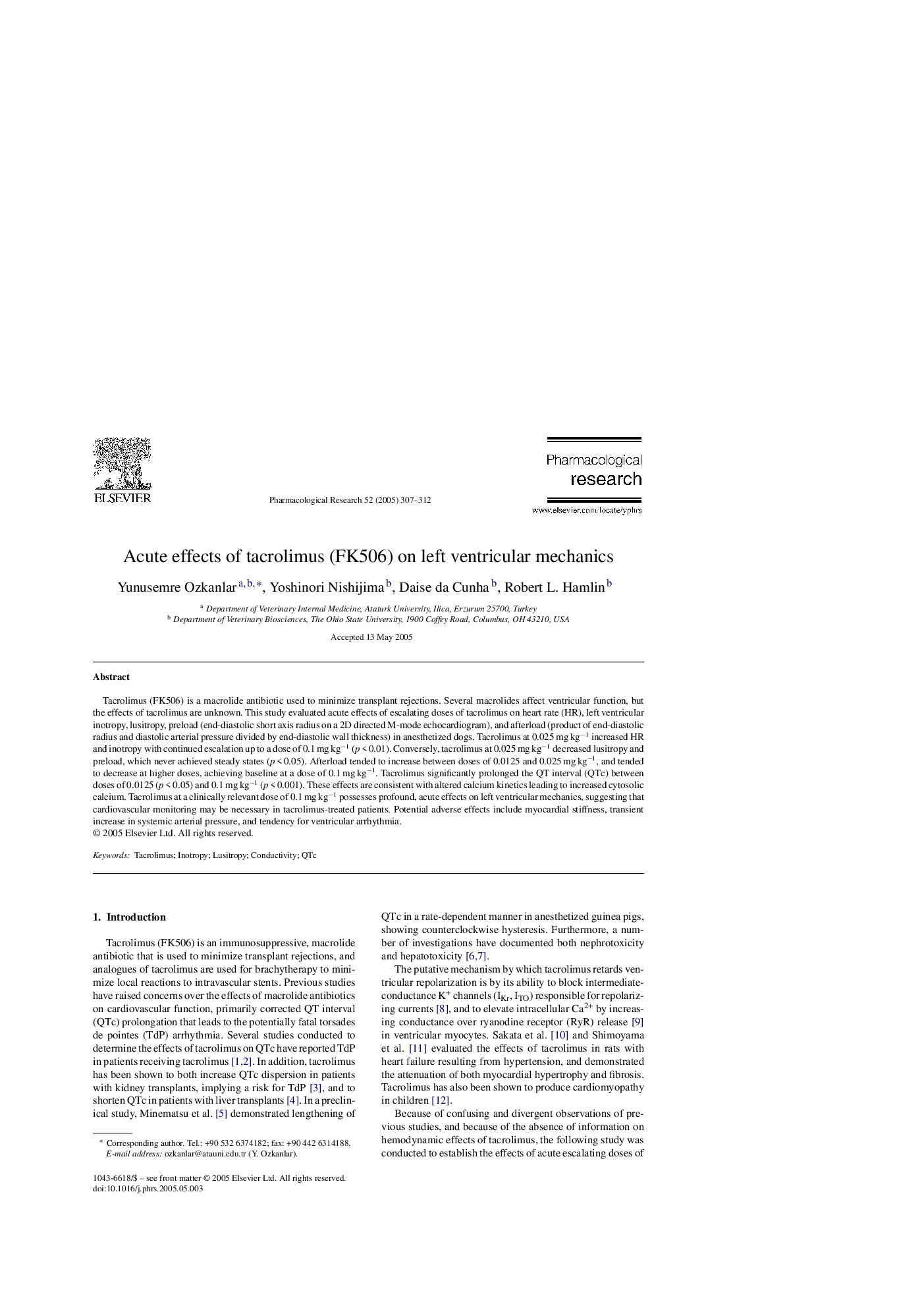| Article ID | Journal | Published Year | Pages | File Type |
|---|---|---|---|---|
| 9014907 | Pharmacological Research | 2005 | 6 Pages |
Abstract
Tacrolimus (FK506) is a macrolide antibiotic used to minimize transplant rejections. Several macrolides affect ventricular function, but the effects of tacrolimus are unknown. This study evaluated acute effects of escalating doses of tacrolimus on heart rate (HR), left ventricular inotropy, lusitropy, preload (end-diastolic short axis radius on a 2D directed M-mode echocardiogram), and afterload (product of end-diastolic radius and diastolic arterial pressure divided by end-diastolic wall thickness) in anesthetized dogs. Tacrolimus at 0.025 mg kgâ1 increased HR and inotropy with continued escalation up to a dose of 0.1 mg kgâ1 (p < 0.01). Conversely, tacrolimus at 0.025 mg kgâ1 decreased lusitropy and preload, which never achieved steady states (p < 0.05). Afterload tended to increase between doses of 0.0125 and 0.025 mg kgâ1, and tended to decrease at higher doses, achieving baseline at a dose of 0.1 mg kgâ1. Tacrolimus significantly prolonged the QT interval (QTc) between doses of 0.0125 (p < 0.05) and 0.1 mg kgâ1 (p < 0.001). These effects are consistent with altered calcium kinetics leading to increased cytosolic calcium. Tacrolimus at a clinically relevant dose of 0.1 mg kgâ1 possesses profound, acute effects on left ventricular mechanics, suggesting that cardiovascular monitoring may be necessary in tacrolimus-treated patients. Potential adverse effects include myocardial stiffness, transient increase in systemic arterial pressure, and tendency for ventricular arrhythmia.
Related Topics
Health Sciences
Pharmacology, Toxicology and Pharmaceutical Science
Pharmacology
Authors
Yunusemre Ozkanlar, Yoshinori Nishijima, Daise da Cunha, Robert L. Hamlin,
